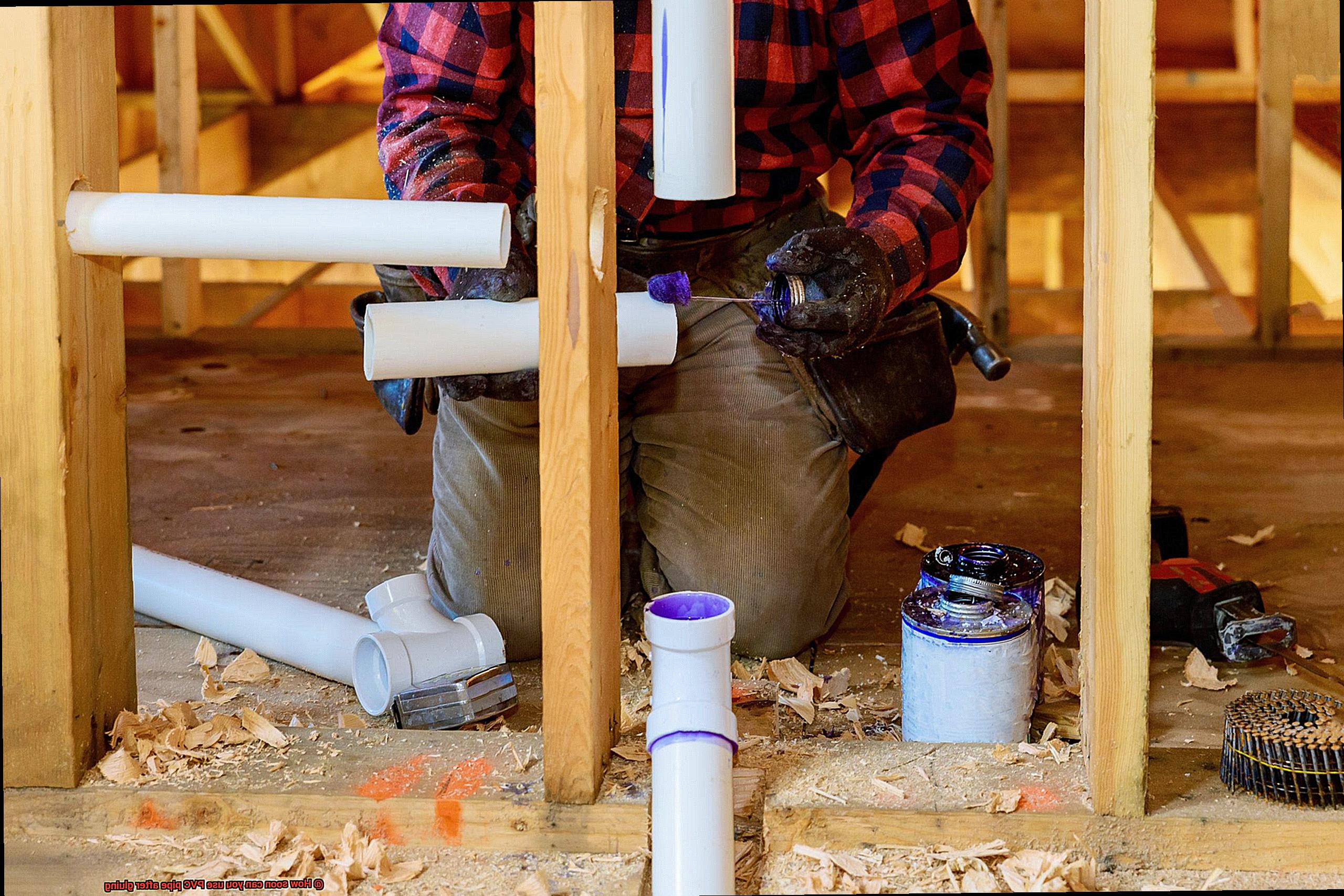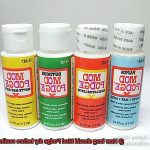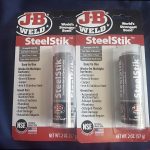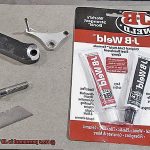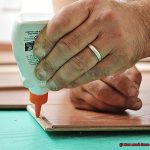You’ve just conquered a DIY plumbing project, skillfully gluing together those PVC pipes. Now, all that’s left is the burning question: when can you finally put your creation to the test? Don’t fret – we’ve got you covered.
Timing is everything when it comes to gluing PVC pipe and ensuring a leak-free success. But let’s face it – waiting for glue to dry isn’t exactly the most thrilling part of any endeavor. Well, fear not. In this blog post, we’re here to share some insider knowledge on how long you should wait after gluing PVC pipe before confidently putting it into action.
Whether you’re tackling a simple household repair or diving headfirst into a larger plumbing project, understanding the correct timeframe is crucial. It’s the key to avoiding potential setbacks or disappointment along the way. By the time you finish reading this article, consider yourself armed with all the information you need to take your plumbing prowess to new heights.
So, without further ado, let’s dive in and uncover the magic behind PVC pipe glue and unveil the secret to determining when it’s truly ready for action. The wait is almost over – get ready to unleash your DIY skills.
What is PVC Cement?
Contents
When it comes to plumbing or construction projects involving PVC pipes, a reliable adhesive is crucial for secure connections. Enter PVC cement, also known as PVC glue or PVC adhesive. In this blog post, we will delve into the world of PVC cement, exploring its composition, working mechanism, and key features that make it an indispensable tool for joining PVC pipes and fittings.
PVC cement is a solvent-based adhesive specially formulated for bonding pieces of PVC pipe and fittings. Unlike traditional glues that rely on mechanical bonding, PVC cement works through a chemical reaction. With its unique combination of solvents, resins, and additives, it softens the outer layers of PVC material, allowing them to meld seamlessly when joined.
Features of PVC Cement:
- Unyielding Strength: PVC cement creates a robust connection between PVC surfaces, ensuring unmatched durability and structural integrity.
- Impenetrable Seal: When applied correctly, PVC cement forms a watertight seal between connected pipes, safeguarding against leaks and maximizing the efficiency of your plumbing system.
- Chemical Resistance: The cured bond is impervious to chemicals commonly found in plumbing systems, guaranteeing the adhesive’s reliability even in the harshest conditions.
- Environmental Resilience: PVC cement can withstand exposure to various environmental factors like temperature fluctuations and moisture without compromising its bond strength.
Using PVC Cement:
To achieve optimal results with PVC cement, follow these steps:
- Surface Preparation: Thoroughly clean the surfaces to be joined using a PVC primer to eliminate any dirt or grease that may impede the bonding process.
- Application: Apply the cement evenly to both surfaces using the applicator provided or an appropriate brush.
- Joining: Immediately join the pieces together while the cement is still wet. Hold them firmly in place for a brief period to allow the bond to form.
- Curing Time: Refer to the manufacturer’s instructions for the recommended curing time. Generally, it is advisable to wait at least 24 hours before pressurizing or using the pipe.
Factors Affecting the Drying Time of PVC Glue
In plumbing and construction projects, achieving a strong and secure bond is essential. PVC glue comes to the rescue, creating an unbreakable seal between pipes and fittings. But what influences the drying time of this superhero adhesive? Delve into the secrets behind the perfect PVC glue bond with us.
- Type of PVC Glue: Just like superheroes, PVC glues come in different forms. Each type has its own specific drying time, making it crucial to follow the manufacturer’s instructions for optimal results. Whether you need fast-drying glue for quick fixes or specialized formulas for specific applications, choosing the right type is key.
- Temperature and Humidity: Even superheroes need the right conditions to unleash their powers. The environment plays a significant role in PVC glue’s drying time. Higher temperatures and lower humidity levels speed up drying, while cooler temperatures and higher humidity can prolong it. Ensure you work in a well-ventilated area with an optimal temperature range for rapid bonding.
- Pipe Size and Thickness: Just as superheroes vary in size and strength, PVC pipes do too. Thicker pipes generally require more time for the glue to fully cure than thinner ones. Additionally, larger diameter pipes may have a greater adhesive surface area, impacting drying time as well. Be patient and allow extra time if working with larger or thicker pipes.
- Joint Type: PVC glue has its signature move, just like any superhero. The complexity of the joint being created can influence how soon you can use the glued connection. Simple straight joints may have a shorter drying time compared to intricate joints like T-joints or elbow joints. The more complex the joint, the more it affects air circulation, which in turn influences drying.
- Application Technique: Applying PVC glue requires finesse, just like a superhero’s fighting style. To ensure proper adhesion, apply an even and sufficient amount of glue. Too much glue can result in longer drying times, while too little compromises the joint’s strength and durability. Find the perfect balance and witness an unbreakable bond.
- Pressure and Handling: Superheroes know that applying the right amount of pressure is crucial. The same goes for PVC glue bonding. Gentle pressure during drying ensures a secure bond. However, excessive pressure can distort or misalign pipes, weakening the bond. Handle your joint with care and avoid unnecessary movements until the glue has fully cured.
- Type of PVC Material: Every superhero has their kryptonite, and PVC glue is no different. Different types of PVC materials may have additives or surface treatments impacting the adhesive properties of the glue. Consult with the manufacturer or supplier to ensure compatibility and achieve optimal results.
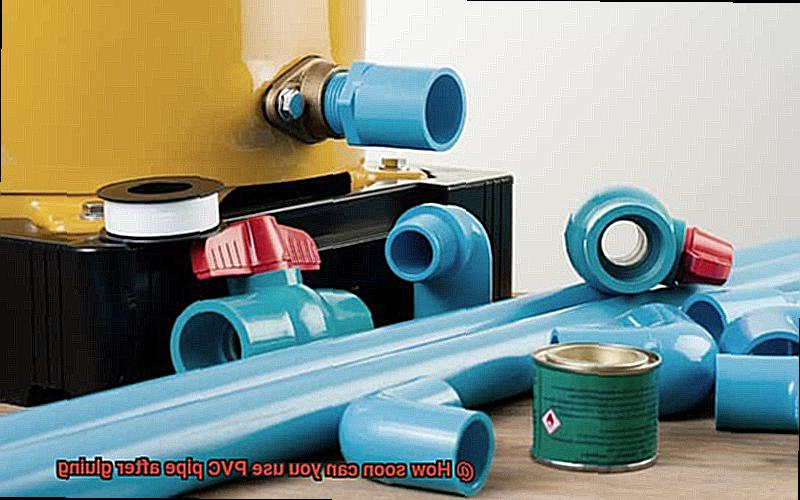
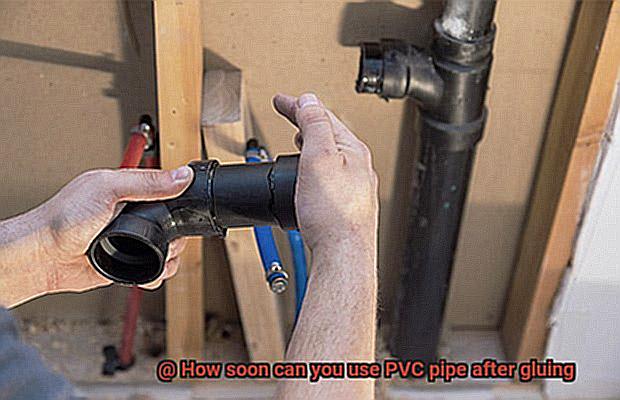
Temperature and The Curing Process
Picture this: you’re standing in your workshop, ready to glue together those PVC pipes for your latest project. But hold on a second, have you considered the temperature? Ah, yes, temperature plays a pivotal role in the curing process of PVC pipe glue. Let’s dive deeper into this fascinating topic.
Before we begin, let’s get acquainted with the concept of the curing process. Curing refers to the magical transformation that takes place when the glue dries and bonds those PVC pipes together. And guess what? Temperature has a starring role in this grand spectacle.
So, what’s the ideal temperature for gluing PVC pipes? Well, my friend, it’s all about finding that sweet spot between 40°F and 110°F (4°C and 43°C). Why this range, you ask? Let me enlighten you. When the temperature drops to chilling levels, the curing process slows down to a snail’s pace. Imagine trying to glue those pipes together on a freezing winter day – it would feel like an eternity as you anxiously wait for that glue to dry. And worse yet, weaker bonds and sneaky leaks could be lurking around the corner.
On the flip side, scorching temperatures can pose their own set of challenges. Sure, you might think that rapid drying is a good thing – who doesn’t want their pipes glued and ready to go in record time? But here’s the catch: when the glue dries too quickly, it doesn’t have enough time to work its magic and form a strong bond between those PVC pipes. And that, my friend, can jeopardize the very integrity of your joint.
Now here’s a pro tip: always consult the manufacturer’s instructions for specific temperature requirements of the PVC pipe glue you’re using. Different glues may have different temperature preferences for optimal curing. So don’t forget to read those fine print instructions, my friend.
But what if you find yourself in a chilly predicament and need those pipes glued ASAP? Fear not, for there is a trick up my sleeve. Grab your trusty heat gun or apply some gentle heat to the joint, and voila. You’ve just sped up the curing process even in the coldest of temperatures. Just remember, my dear friend, not to go overboard with the heat – we wouldn’t want those precious PVC pipes to suffer any damage.
Oh, and here’s an intriguing tidbit: humidity levels can also play a role in the curing process. High humidity can be a pesky obstacle, slowing down drying time and testing your patience. On the other hand, low humidity can be a sly accomplice, speeding up the curing process. So, keep an eye on those humidity levels too, my friend.
Humidity and The Curing Process
In the art of gluing PVC pipes, achieving a bond that is strong and unyielding is of utmost importance. Amidst the myriad factors that influence the curing process, one often underappreciated variable is humidity. In this blog post, we will embark on a captivating journey into the realm of humidity and its captivating effects on PVC pipe glue’s curing process.
The Role of Humidity:
Humidity, the measure of moisture suspended in the air, wields a profound influence on the curing process of PVC glue. Moisture-laden air can decelerate the curing process, while arid conditions can expedite it. Let us embark on an exploration of how humidity orchestrates the chemical reaction that metamorphoses glue into an enduring bond.
High Humidity and its Consequences:
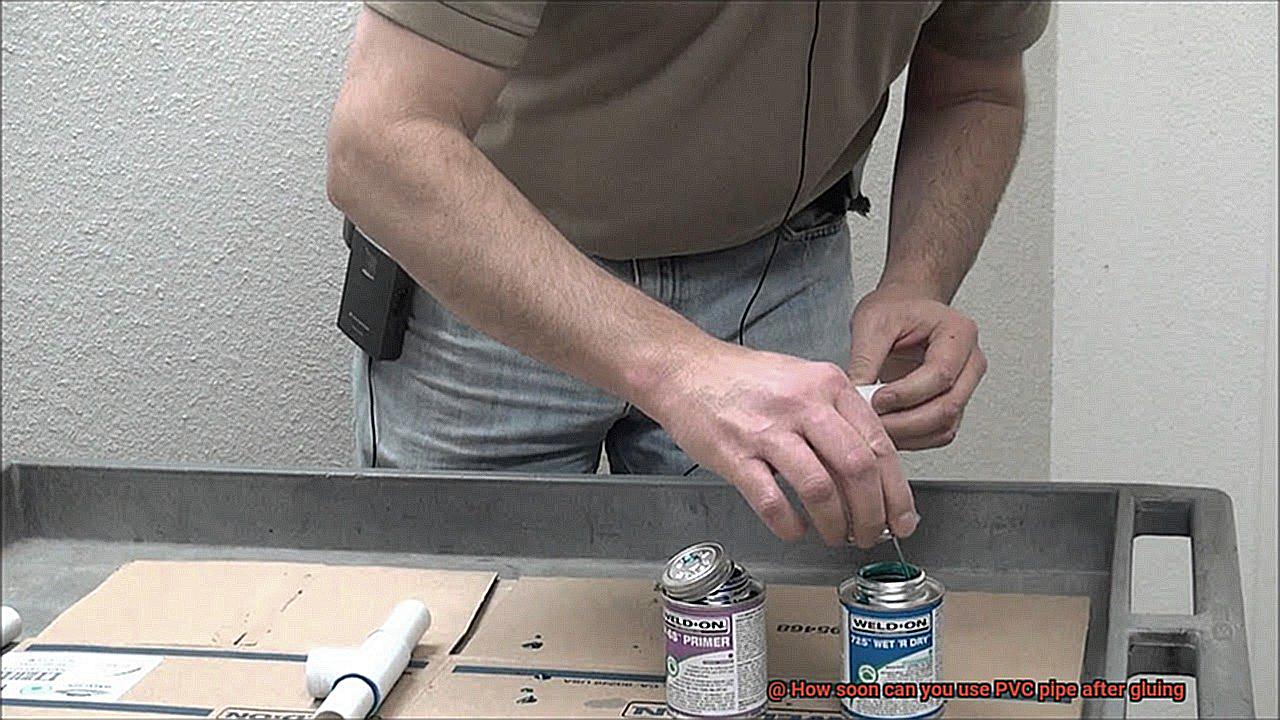
Within regions drenched in high humidity, surplus moisture in the atmosphere interposes itself in the chemical reaction responsible for cementing PVC glue. This intrusion weakens the bond and prolongs the curing time. Therefore, it is crucial to be mindful of humidity levels during the gluing process to ensure a robust joint that withstands the test of time.
Low Humidity and its Impacts:
Conversely, environments devoid of moisture hasten the curing process of PVC pipe glue. With minimal air-borne water molecules to hinder the chemical reaction, expedited bonding becomes a reality. Nevertheless, extreme aridity can render the joint brittle, susceptible to fracturing. Thus, striking a harmonious equilibrium is imperative.
Ideal Humidity Range:
To unlock optimal results, it is recommended to operate within a humidity range of 40% to 60%. Within this realm, an ideal environment emerges that fosters impeccable bonding without compromising joint integrity. Sustaining appropriate humidity levels serves as a linchpin for achieving enduring and dependable connections within PVC pipe projects.
Maintaining Optimal Conditions:
In locales where humidity extremes prevail, supplemental measures may be required to preserve the ideal ambiance for gluing PVC pipes. The judicious employment of dehumidifiers or humidifiers can fashion a controlled setting, ensuring dependable and efficient curing.
Specialized PVC Cements
Specialized PVC cements are specifically formulated adhesives designed to create strong and durable connections in PVC pipe projects. These secret ingredients ensure secure and leak-proof joints between PVC pipes and fittings. To achieve successful results, there are several key considerations to keep in mind.
First and foremost, it is vital to follow the manufacturer’s instructions when using specialized PVC cements. Each product may have specific guidelines regarding application techniques, drying time, and temperature requirements. By adhering to these instructions, you can ensure that you are using the adhesive correctly and maximizing its effectiveness.
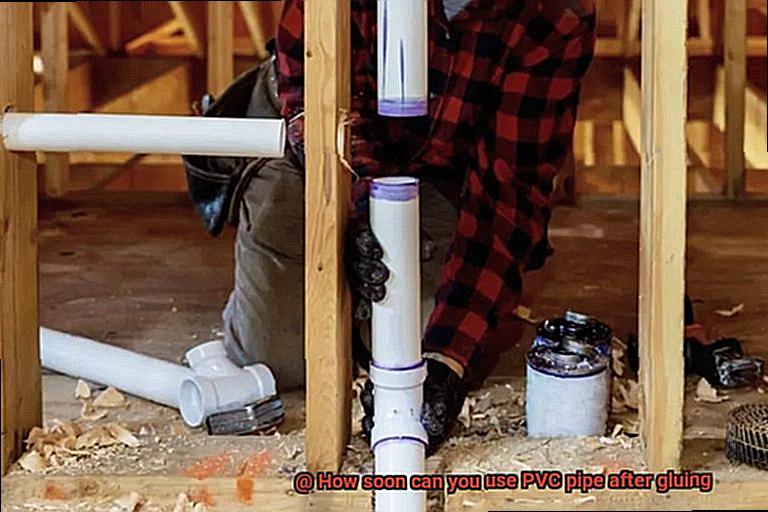
Applying the adhesive evenly is another crucial factor in achieving a strong bond. Uneven application can result in weak spots or gaps in the joint, compromising its integrity. To ensure even distribution, use a brush or applicator specifically designed for PVC cement. Take your time and apply the adhesive smoothly and consistently along the surfaces being joined.
Allowing sufficient drying time is equally important. While some specialized PVC cements may dry relatively quickly, it is generally recommended to wait at least 2 hours before pressurizing or using the PVC pipe after gluing. However, drying times can vary depending on the specific product and environmental conditions. Colder temperatures or humid environments may require longer curing times. It is crucial to wait until the adhesive has fully cured before subjecting the joint to pressure or stress.
In addition to following the manufacturer’s instructions, applying the adhesive evenly, and allowing sufficient drying time, it is also essential to ensure that the surfaces being joined are clean and free from dirt, grease, or moisture before applying the PVC cement. Any contaminants on the surface can interfere with the bonding process and weaken the joint.
How Long Should You Wait Before Using PVC Pipe?
When it comes to DIY projects involving PVC pipe, the timing of gluing the pipes together is crucial. Rushing the process can result in leaks, failures, and costly repairs down the line. So, how long should you wait before using PVC pipe? Let’s dive into the details to ensure a strong bond that stands the test of time.
Factors Affecting Curing Time:
- Temperature and Humidity: The curing process of PVC pipe glue is influenced by temperature and humidity levels. Higher temperatures and lower humidity generally speed up the curing process, while colder temperatures and higher humidity can slow it down.
- Type of Glue: Different PVC pipe glues have varying curing times. It is vital to adhere to the manufacturer’s instructions for specific guidelines based on the glue being used.
Recommended Waiting Time:
- General Rule: As a rule of thumb, it is recommended to wait at least 24 hours before using PVC pipe after gluing. This allows enough time for the glue to fully cure and create a strong bond between the pipes.
- Manufacturer’s Instructions: Always refer to the instructions provided by the glue manufacturer for precise curing times. They may offer more specific guidelines based on their product’s formulation.
Additional Considerations:
- High Pressure or Extreme Temperatures: If your PVC pipe system will be subjected to high pressure or extreme temperatures, it may be necessary to wait longer than 24 hours for the glue to fully cure. Check the manufacturer’s instructions for any specific recommendations in such scenarios.
- Proper Alignment and Securement: During the curing process, it is crucial to ensure that the joint remains properly aligned and secured. This prevents leaks or failures that can occur if there is movement or misalignment during the curing process.
Tips for Properly Curing PVC Glue
PVC pipes are the backbone of plumbing systems, offering durability and affordability. However, to achieve a secure connection between PVC pipes, proper curing of PVC glue is essential. In this article, we will explore tips and techniques to ensure a strong and durable bond that can withstand pressure and movement.
Tip #1: Follow the manufacturer’s instructions:
Each brand of PVC glue may have unique curing requirements. It is crucial to carefully read and understand the instructions provided with the specific product you are using. Following the manufacturer’s instructions will help you achieve optimal results.
Tip #2: Allow ample curing time:
In general, most PVC glues require at least 24 hours to fully cure. To be on the safe side, wait an additional 24 hours before subjecting the joint to pressure by turning on water or other fluids. Providing sufficient curing time will prevent leaks and other issues in the future.
Tip #3: Secure joints during curing:
To maintain a seamless bond, it is important to secure the pipes in place using clamps or other supports until the glue has cured completely. Any movement during the curing process can weaken the joint, so it’s best to ensure stability throughout.
Tip #4: Consider temperature and humidity:
Temperature and humidity can significantly impact the curing time of PVC glue. Higher temperatures accelerate the process, while lower temperatures slow it down. Similarly, high humidity levels prolong curing time, while low humidity levels shorten it. Take these factors into account when planning your project.
Tip #5: Clean and prepare surfaces properly:
Before applying PVC glue, thoroughly clean and prepare the surfaces to be bonded. Any dirt, grease, or moisture on the surfaces can hinder the bonding process and weaken the joint. Use a cleaner recommended by the manufacturer to remove contaminants and ensure a clean surface for gluing.
wxTq_5szm4g” >
Conclusion
To achieve a bond that’s as strong as steel, timing is everything when it comes to using PVC pipe after gluing. While waiting a minimum of 24 hours is generally recommended, various factors can influence the drying time of PVC glue.
Temperature and humidity are key players in the curing process. Higher temperatures and lower humidity levels speed up drying, while cooler temperatures and higher humidity can put the brakes on. So make sure you’re working in a well-ventilated space with optimal temperature conditions for lightning-fast bonding.
The type of PVC glue you use also affects drying time, so don’t forget to consult the manufacturer’s instructions for specific guidelines. Thicker pipes may need more time to fully cure than their slender counterparts, while intricate joints might take longer due to limited air circulation.
Don’t underestimate the power of proper surface preparation either – cleaning and banishing any contaminants will help create an unbreakable bond. Applying an even layer of glue and applying gentle pressure during drying also contribute to joint integrity.
Now, if your PVC pipe system will face high pressure or extreme temperatures, you might have to exercise some extra patience. In these cases, waiting longer than 24 hours for the glue to fully cure could be necessary.
By following these tips and techniques, you’ll ensure your PVC pipe project is a leak-free masterpiece. Remember: patience is your secret weapon when it comes to gluing PVC pipes – allowing the glue to dry properly guarantees a bond that stands strong against the test of time.

